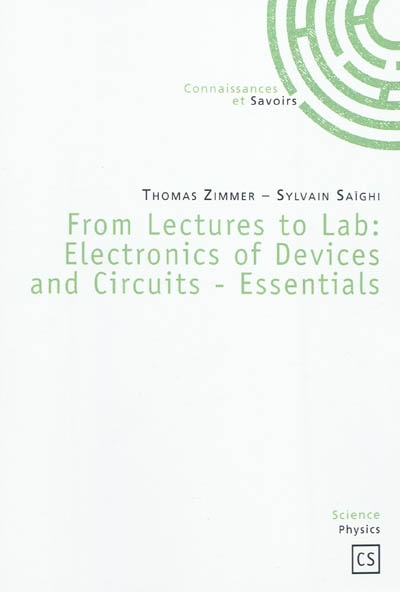par Zimmer, Thomas (1962-....)
Connaissances et savoirs
-
-
Disponible - A partir du 25 août 2025 - 621.40 ZIM
par Zimmer, Thomas (1962-....)
Connaissances et savoirs
-
Disponible - A partir du 25 août 2025 - 621.40 ZIM

Les notions de bases de l'électronique sont abordées, accompagnées d'exercices et des sessions en ligne.

An essential understanding of basic electronic concepts. The topics concern (i) diodes and diode circuits such as rectifiers, (ii) basic transistor principles such as biasing, operating point, load line, small signal analysis and (iii) amplifier's quadrupole presentation bringing into play the input and output impedances, the transfer function and their interaction.
Coupling theoretical concepts and investigation with exercises and online lab sessions, the course structure follows the old and very true adage: "I hear and I forget, I see and I remember, I do and I understand." Well thought and perfectly clear, with rising difficulty levels, a must-have for every physics student.
Disponible - A partir du 25 août 2025 - 621.40 ZIM